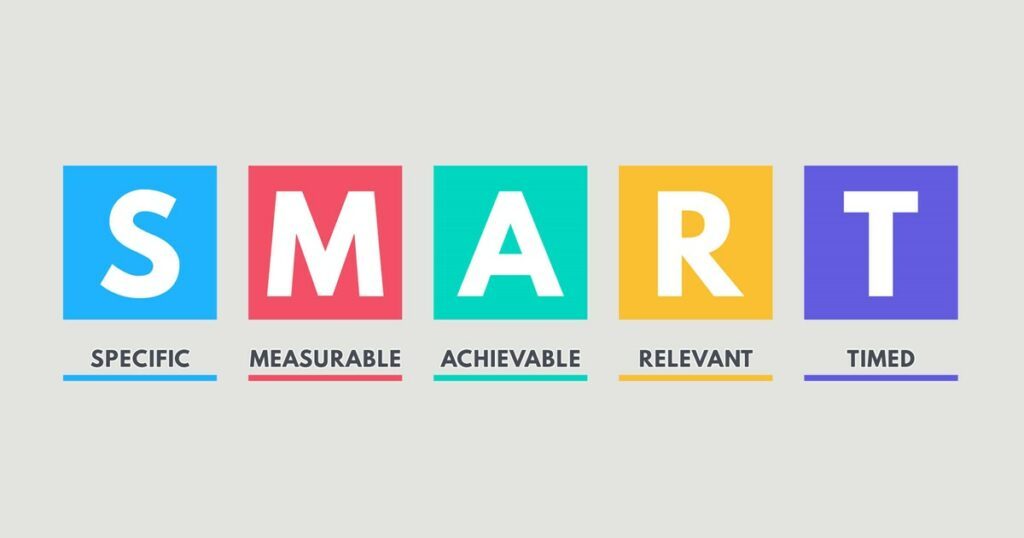Setting Affiliate Marketing Goals to Stay Focused and Productive
Podcast: Setting Affiliate Marketing Goals (11:19)
When you dive into the World of affiliate marketing, one of the first things you’ll notice is how easy it can be to get distracted from the job at hand.
Between researching products, creating content, tweaking your website, and monitoring analytics, you can end up spinning your wheels without making real progress.
That’s where goal setting comes in. Without clear, actionable goals, it’s like driving without a map—you’ll end up going in circles and getting absolutely nowhere.
Setting affiliate marketing goals can help you stay focused, productive, and motivated.
But it’s not just about slapping some numbers on a page and calling it a day. Effective goals require a bit more thought and structure.
So, let’s dive into how you can set solid affiliate marketing goals to drive your business forward.
Why Set Goals for Affiliate Marketing?
Before we get into the “how,” let’s talk about the “why.” Why should you set goals in the first place?
– Keeps You Focused: Affiliate marketing offers endless opportunities, but without goals, you’ll find yourself adopting a scattergun approach.
One minute you’re writing a blog post, the next you’re tweaking your logo. Goals provide direction.
– Boosts Productivity: Clear, measurable goals give you a reason to get out of bed on a morning and put in the work. They create a sense of purpose for you.
– Measures Success: Goals allow you to track your progress. Are you hitting your targets? If not, you can adjust your strategy to get back on track.
– Prevents Burnout: When you’re chasing random tasks with no end in sight, burnout is inevitable. With goals, you’ll have clear milestones that keep you motivated and give you small wins along the way.
Types of Goals You Should Set
When it comes to affiliate marketing, you can break your goals down into a few categories.
This helps you stay organised and ensures you’re covering all your bases.
Here’s a look at some different types of goals you should consider setting.
1. Income Goals
Let’s be honest—at the end of the day, affiliate marketing is all about making money. That’s why you started, right?
Setting income goals is important, but it’s not enough to say, “I want to make more money.” You need to be specific.
– Monthly Revenue Target: How much do you want to make each month? Start with a reasonable target based on your current performance and gradually increase it as you grow.
Is it £1,000, £2,000, £5,000?
Define it.
– Commission per Sale: If you’re promoting products with different commission rates, you might set a goal to increase your average commission per sale by focusing on higher-paying offers. Maybe medium or high-ticket items instead of low revenue ones.
Personal Story: When I started affiliate marketing, I set a modest goal of earning £100 a month with Amazon Associates.
It seemed small, but for a newbie, it was a good starting point. Hitting that first £100 gave me the confidence to aim higher, and now I set quarterly income goals that are far more ambitious. Small wins build momentum!
2. Traffic Goals
Traffic is the lifeblood of affiliate marketing. The more people visit your site, the more opportunities you have to make sales.
But again, you need to be specific. Saying “I want more traffic” won’t cut it. Work out and plan exactly how you will achieve it.
– Organic Traffic: How many visitors do you want to attract through SEO? Set monthly or quarterly targets for organic traffic.
Organic traffic is really in the Search Engines hands, so it shouldn’t be your only goal.
– Referral Traffic: If you’re leveraging social media or other platforms, set goals for how much referral traffic you want from those sources.
This will come from YouTube, Twitter, Pinterest, Instagram, Medium, Etsy, etc.
– Paid Traffic: If you’re using paid advertising, set a target for your return on ad spend (ROAS) or the number of conversions you aim to achieve.
Tweak the numbers but start small. It’s very easy for Paid Traffic costs to run away from you.
Personal Story: One of my biggest struggles early on was getting traffic. I’d write blog posts and promote them on social media, but the numbers were just trickling in.
I realized I needed to focus on SEO and set a goal to increase my organic traffic by 50% in six months. I invested time into learning keyword research, optimizing my posts, and within a few months, I hit that goal.
3. Content Creation Goals
Content is king, but creating it consistently can be challenging.
Setting goals around content creation helps ensure you’re regularly putting out high-quality material that drives traffic and conversions.
Put together a content creation plan.
– Blog Posts: How many blog posts will you write each week or month?
You can also set goals around the quality or length of your posts, like focusing on long-form content that ranks better in search engines.
– Videos/YouTube: If you’re creating video content, how many videos will you produce? This can be especially important if you’re using platforms like YouTube to drive traffic.
– Email Marketing: Set goals for how often you’ll send newsletters or promotional emails. Don’t forget to track your open and click-through rates as well!
Personal Example: I used to write blog posts whenever I “felt like it,” which, unsurprisingly, wasn’t very often.
But once I set a goal of publishing three blog posts a week, I started building momentum.
Consistency was key, and now, setting specific content creation goals is a non-negotiable part of my strategy.
4. Conversion Rate Goals
Traffic is great, but if people aren’t converting, it’s not going to help your bottom line.
That’s where conversion rate goals come in. Try to improve your click through rate (CTR).
– Overall Conversion Rate: How many of your visitors are turning into buyers? A typical conversion rate for affiliate sites is around 1-2%, but that number can vary a lot based on your niche and product type.
– Email Opt-in Conversion: If you’re building an email list, set a goal for how many visitors sign up for your newsletter or lead magnets.
– Call-to-Action (CTA) Performance: Set goals around how many people click on your affiliate links or take other desired actions, like signing up for a free trial or downloading a guide.
5. Learning and Development Goals
Affiliate marketing changes fast—algorithms shift, new platforms emerge, and consumer behaviors evolve. If you’re not constantly learning, you risk falling behind.
– Courses/Workshops: Set a goal to complete a certain number of courses or workshops on relevant topics like SEO, social media marketing, or copywriting. Sites like Wealthy Affiliate have structured workshops for you to follow.
– Networking: Affiliate marketing is not just about working behind a screen. Building relationships with other marketers can open doors to collaborations and new opportunities.
Set a goal to attend virtual or in-person events, or to reach out to other affiliates in your niche.
Personal Example: One of my goals in 2022 was to become proficient in SEO. I invested time in courses, followed industry blogs, and even sought out mentorship from other successful marketers.
By 2023, my site’s traffic had significantly improved, all because I made a goal to keep learning.
How to Set SMART Goals

The concept of SMART goals is widely used in business, and it works just as well in affiliate marketing.
Here’s how to make sure your goals are SMART:
– Specific: Be very clear about what you want to achieve. Instead of saying “I want more traffic,” say “I want 1,000 visitors per month.”
– Measurable: Ensure your goal can be quantified. “Increase email opt-ins by 20%” is measurable, while “grow my email list” is not.
– Achievable: Be realistic. It’s great to aim high, but setting goals that are out of reach can lead to frustration and burnout if you never reach them. If you’re just starting, earning £1,000 in your first month might not be achievable—but £100 could be if you work hard.
– Relevant: Your goals should align with your broader business objectives. If your focus is on content creation, setting a goal to learn pay-per-click advertising might not be the best use of your time.
– Time-Bound: Set a deadline for your goals. This creates urgency and helps keep you on track. For example, “Increase organic traffic by 25% in three months.”
Tracking Your Progress
It’s not enough to just set goals—you need to track your progress regularly. Use tools like Google Analytics to monitor traffic, conversions, and revenue.
If you’re working toward a content goal, create a spreadsheet to track your output and deadlines.
Review your progress at the end of each week or month to see if you’re on track or need to adjust your efforts.
Final Thoughts and Conclusion
Setting goals in affiliate marketing is like setting up a GPS for your business.
Without them, you’ll get lost in the daily grind, working hard but not necessarily moving forward.
By creating specific, measurable, and achievable goals, you can stay focused and productive, and watch your affiliate business grow.
What’s the number one goal you want to achieve in your affiliate marketing journey?
Let me know in the comments—I’d love to hear your thoughts and share some advice!
FAQ – Setting Affiliate Marketing Goals
1. Why is goal setting important in affiliate marketing?
Goal setting helps you stay focused, measure progress, and maintain motivation. It provides a roadmap for your business, allowing you to track achievements and stay productive.
2. How do I set effective affiliate marketing goals?
Use the SMART method (Specific, Measurable, Achievable, Relevant, Time-bound) to create clear, actionable goals that align with your overall vision.
3. How often should I review my goals?
Review your goals regularly—monthly or quarterly—to ensure you’re on track and make adjustments as needed.
4. What are common mistakes when setting goals?
Setting vague or unrealistic goals, focusing only on short-term wins, or not breaking large goals into smaller, actionable steps.
5. How do I stay motivated when pursuing long-term goals?
Break down your goals into smaller milestones, celebrate progress, and keep your “why” (the reason you started) at the forefront of your mind.
6. Should I adjust my goals if I’m not meeting them?
Yes, flexibility is key. If you aren’t meeting your goals, reassess your approach and make necessary adjustments based on what’s working and what isn’t.
Visited 7 times


